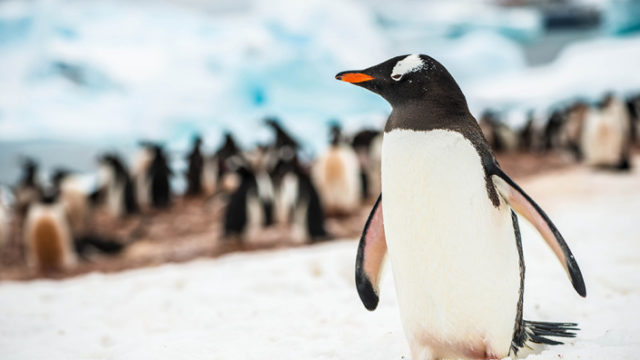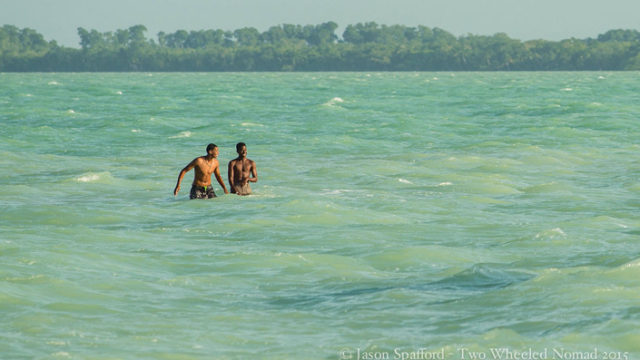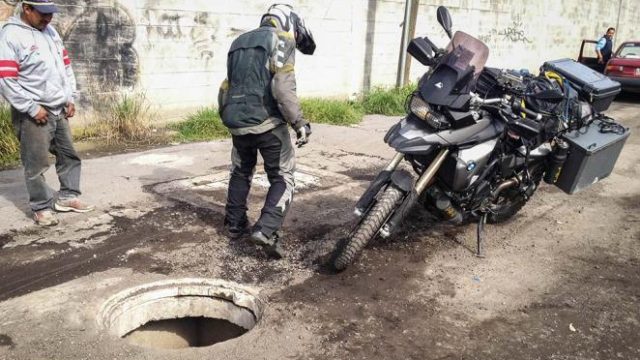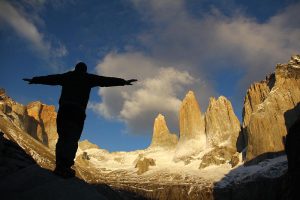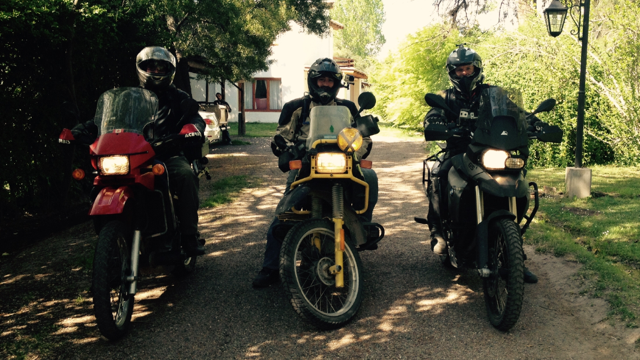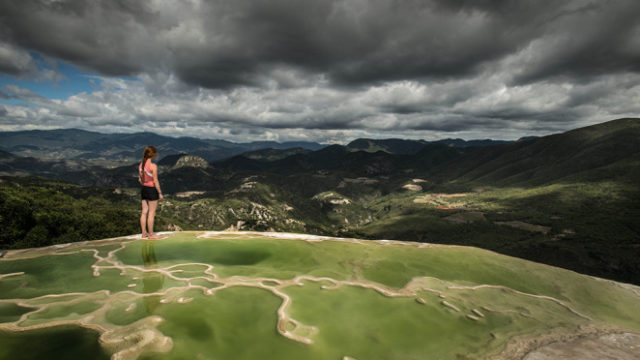Before withdrawing from our haven that’s been Chacras de Coria these past halcyon weeks, Toto took us to a six day international enduro race at San Juan. Countries were represented from around the globe, flags on display from all corners of the world. A sense of excitement and racing fever gripped everyone, the place became an instant sand-churned hive of activity. The site was a furnace, the sun an executioner but that mattered little and less; we were there to witness what looked and felt synonymous to the Dakar Rally, one of the world’s most famous endurance races in South America where competitors cover around 500 miles off road per day for two weeks.
Or at least it did to my mind’s eye on a more compact scale. I gaped at the scene for hours overawed by these focused men and a sprinkling of fiercely determined women. Their sand, dirt and ripio riding skills left me eating their dust, and some. These guys weren’t just competing, they were pros making the circuit – a heightened blend of technical difficulty and endurance year upon year – look a doddle. They were whizz-ards on wheels – it was quite simply mastery in motion.

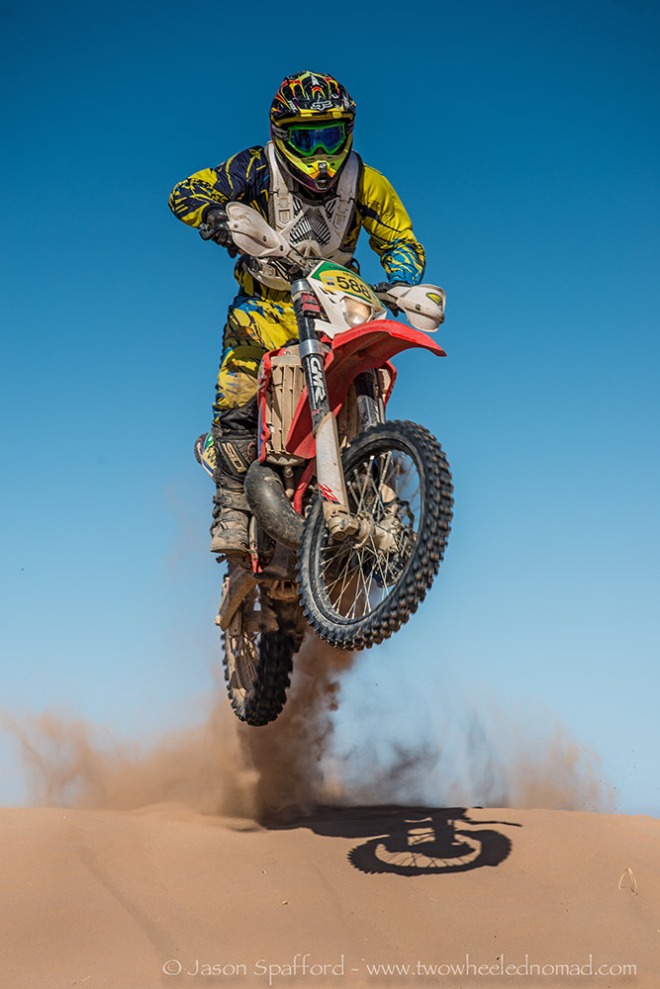
Fond farewells exchanged with our Mendozan amigos, Pearl and Jason’s moto, I stared out the bus window peering contentedly into the depths of the tropics nearing Brazil. Northeast Argentina’s trees grew in density and colour, thickets of startling green rainforest became my window of vision’s new norm. After 36 hours of straining my eyes and imagination and memory in a metal four-wheeled box, my eyes had grown heavy with a weariness I’d not felt in a while. A curious lassitude had settled over me although after Andesmar’s cheery game of bingo for its passengers over the course of a rather de luxe ride akin to flying first class, I smiled to no one in particular and leapt out the moment we arrived. Long distance bus travel over 1,400 miles of tarmac definitely had its merits, saving wear and tear on the bikes and pesos in our pocket. The day was bright, warm on the skin and a hairdryer’s current of air caressed our faces.
After some time shopping around, we settled on ‘Peter Pan’ hostel; only a hop, skip and a jump from the Puerto Iguazu bus terminal although my mind couldn’t help wander towards a fondness for Pearl, my two-wheeled Tinkerbell. Who wants to trudge around in sticky temperatures laden with gear like a pack mule when you have a perfectly good motorcycle chomping at the bit – allowing the wind to breeze through your hair and take you places to boot? My backpacking days were definitely numbered from here on in.
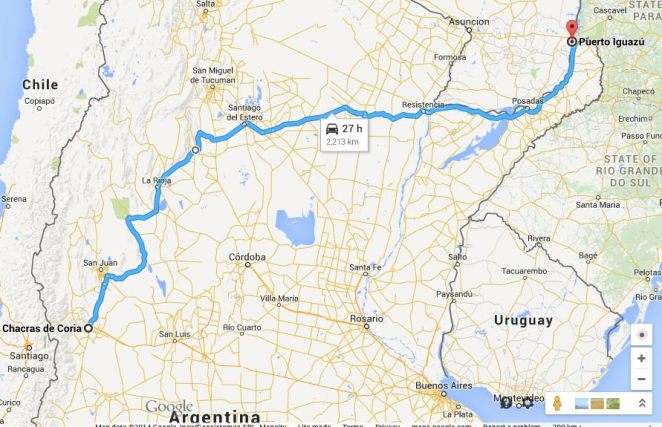
Iguazu Falls is by far and away wondrous as it is watery. We entered the national park, a World Natural Heritage UNESCO site – at once unfamiliar and intoxicating – to see a series of waterfalls that indeed confirmed our suspicions. It made all previous cascades seen around the globe look like a running tap by comparison. In every drop of water stretching for 2.7 kilometres: spilling over the cliffs’ edges and plummeting hundreds of feet into deep pools at the canyon floor. The falls plunging over each precipice pounded the eardrums with a sonorous noise, striking at every sense and deliciously assaulting the core of my being. Its thunderous boom impressed on my soul, knowing the deep-rooted roar would forever resonate in my memory. The guy next to me observed, “Well, that’s nice”.
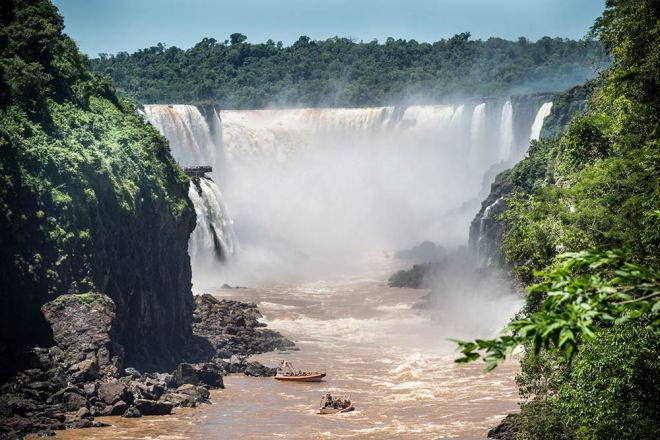
Just what brew of creation had formed the cascades and resultant biodiversity hotspot? Rio Iguazu meanders for 1,200 kilometres through the tropics of Argentina and Brazil and then dissolves in fury and uproar and power in perhaps the planet’s mightiest waterfall. It was astounding. As I inclined my head, I just stood breathing it in for goodness knows how long. It was instant and dramatic. But why was the water tinged with a dirty brown colour?
Four decades ago, the waters actually ran as clear as the content from your kitchen tap. Since then because of deforestation in most of the watershed, each time it rains water washes away the unprotected soil, which turns reddish brown. Consequently, the turbidity affects everything else: fish can’t find each other to court and spawn, birds and mammals that feed on fish can’t see their prey. And so the eco-chain is adversely affected – cue the domino effect. Egocentricity takes advantage again. I understood the dams upriver acted as sedimentation tanks lessening the problem. Mmmn, about as effective as a cat flap in a lion enclosure. Or mayhaps it was like putting a sticking plaster on, hiding the damage but not the hurt.
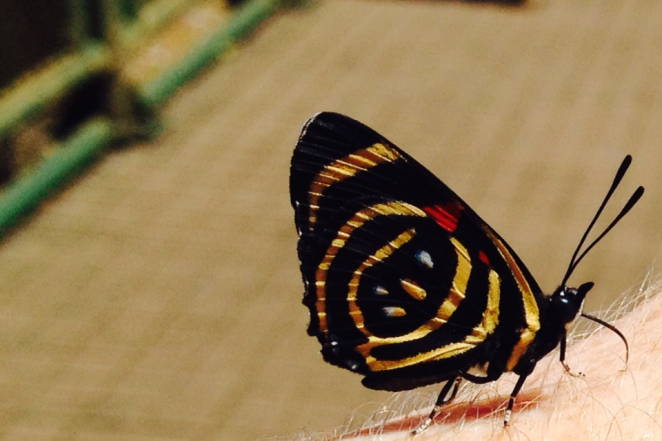
The Argentine perimeter of Iguazu offered us more intimate close ups of the falls, especially on the trails while the Brazilian side – excited to see both boundaries of Mother Nature’s unrestrained wonder – yielded an altogether different experience. A more holistic, panoramic perspective. Between the surging waterfalls and us was a fine variety of flora and fauna inhabiting the Atlantic Forest. Home to a plethora of plants including 32 species of orchids punctuating the subtropical vegetation, densely packed beneath a gentle rain of butterflies fluttering all around. Either side, any sound we were making on foot was immediately masked by the endless noises of living forest. Tropical birdlife such as the toucan and parrot added a splash of colour against the spectrum of greens, whom between them and 400 other species chattering and warbling, sang in a sweet cacophony.
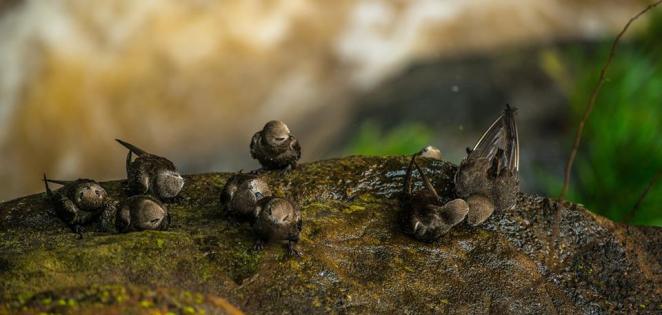
Through the trilling of the songbirds and the hissing of insects, I could hear the water resounding, its ever-present bellow penetrating deep. Looking past the cascades upon closer inspection, swarms of jet-black swifts – smaller than a person’s palm – flew briskly into the heavy curtain of water. Zipped straight through onto the sheer rock face. Who knew they’d be doing something like that? What ungraspable and amazing breadth of confidence these little creatures displayed. Feeding on the insects ricocheting off the raging water, the swift was the Titan of the sky. From our vantage point of various bridges parallel to the tiered falls, I’d see their keen eyes looking up at me. Others were far too occupied preening their drenched feathers. All perched happily on the wet rock, resting vertically on the wall – thanks to their legs too short against wings too long – to allow them to land on flat ground.
We glimpsed a fair few black and white tegu lizards skulking about, probably irritated by the swarm of coatis. Relative to the skunk, the ringed tailed coati is a raccoon-like animal with a flexible snout, forever sniffing to snack on something solid. Or any unappetising, indigestible morsel for that matter. Pugnacious they were, many landed themselves in a skirmish to win that extra mouthful from their peers. Their spirited aggression and murderous affrays made it impossible to forget their presence. Particularly as the park had strategically placed billboards throughout depicting a boy’s lacerated hand, courtesy of the little blighters. Gotcha: Don’t feed or fight the dastardly devils. I wondered what the aforementioned boy had failed to keep in his possession at the cost of losing a pound of flesh.
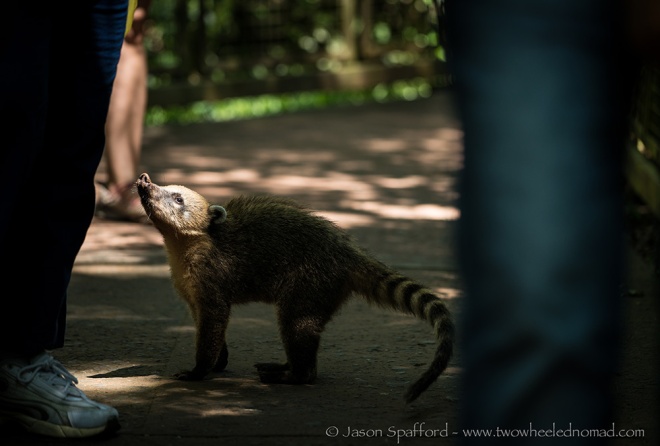
Above the dense undergrowth of Jurassic jungle, trees grew colossal in size whose upper feathery tops could be seen from miles away, some like thick fingers scratching at the sky. Canopies towered up to 30 metres, home to the odd monkey seeking refuge from the harpy eagles, eager to forage their next meal. The expanse of dense foliage also worked wonders in hiding the elusive pumas, panthers and jaguars – no doubt roaming leagues away from the throng of tourists and every other patron of the park. Moist air hung heavily in the rainforest, barely stirred by a lazy breeze. Entering the shadows provided the slightest solace from an uncaring sun – a tad concerned that I’d start to audibly crackle in the searing temperatures. The steamy atmosphere seemed to press in close where our only relief to the wet heat was of course the showering spray from the falls – the perfect antidote.
Amongst the vegetation grows the guapoy, a type of strangler fig that uses the larger trees for support until it finally asphyxiates its host. I was more wary of resident snakes lurking in the bushes and any leeches ready to latch on although didn’t see any of the former, or lose any blood from the latter. Unlike our meet and greet with the mosquitoes’ favourite pastime; by dusk they hummed in a column, stymied by the thick layer of insect repellant we’d slathered over our already sun-screened, salty skin. A sinking sun cast long shadows over the park giving way to a beautiful evening of warm and limpid light nearing dusk. The air was alive with the unmistakable sound of cicadas.
At 8 o’clock – both the first and last hour of the park – it’s precious. Particularly as the crowds dispersed first thing and eventually diminished around closing. In between, the walkways were like a river, thick with traffic and all of it flowing furiously in two directions – we were riding with it one way or the other like logs in a current. Folks gathered in from all over: they stopped suddenly on walkways, crowded the lookout points and choked the viewing platforms. Although rife in numbers, the window for ‘people watching’ opportunity was rich, which presented a two-legged show in varying degrees of strangeness. Doesn’t it always?
Half price tickets were given to us on returning to the Argentine side a second day. Our third day at the falls however was given over to a nautical experience, much cheaper on the Argentinean border. An unmissable, full-on-soaked-to-the-skin experience that will leave your face distorted into a rictus, jaw aching from the onslaught of laughter as much as your eyelids brutally battered. I fought with every bit of sinew in my body to keep my eyes open upon entering the gushing falls – an utterly pointless endeavour, as was wearing our waterproofs. A snorkelling mask would have worked like a charm though. Insanely good fun.
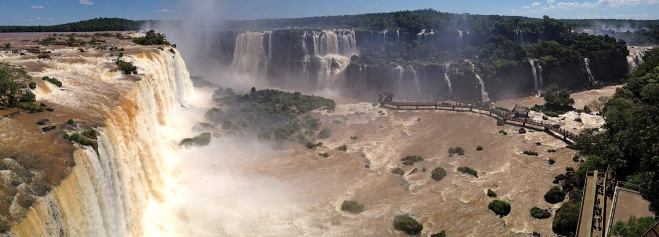
When the sun beamed down on the columns of rampant water, rainbows sprung up everywhere. In a puff of radiance, double arches of colour formed now and again. It’s when you see a duo of rainbows, you think double wow! It gave rise to a certain je ne sais quoi. And certainly put back what the national park’s commercialism tried to take away – in parts made to feel like an attraction-crammed theme park – some of the romance and rawness of the place. Rainbows, like emotions are the colours of the soul, they’re spectacular and incredible. When you don’t feel, the world becomes muted. Dull even, reducing life’s range of colour down to monotones, greys and blacks. I think travel invariably facilitates living a life rich in layers of colourful reactions and responses – one that knows no bounds is an incredible dance of being. Iguazu Falls was a visual symphony as much as a visceral experience. Not one to be missed.

